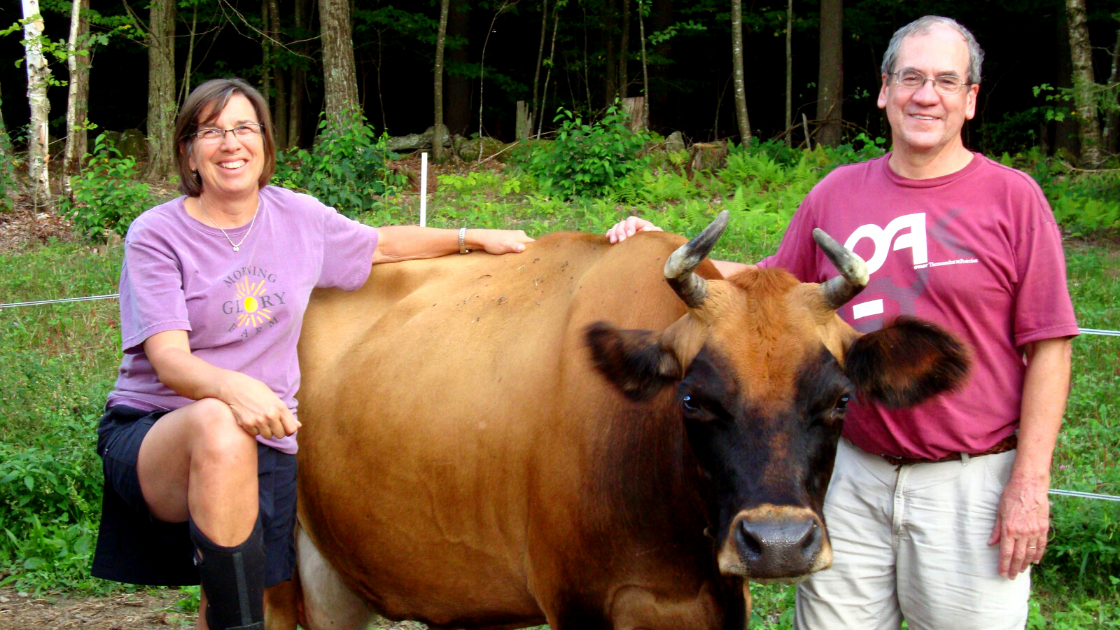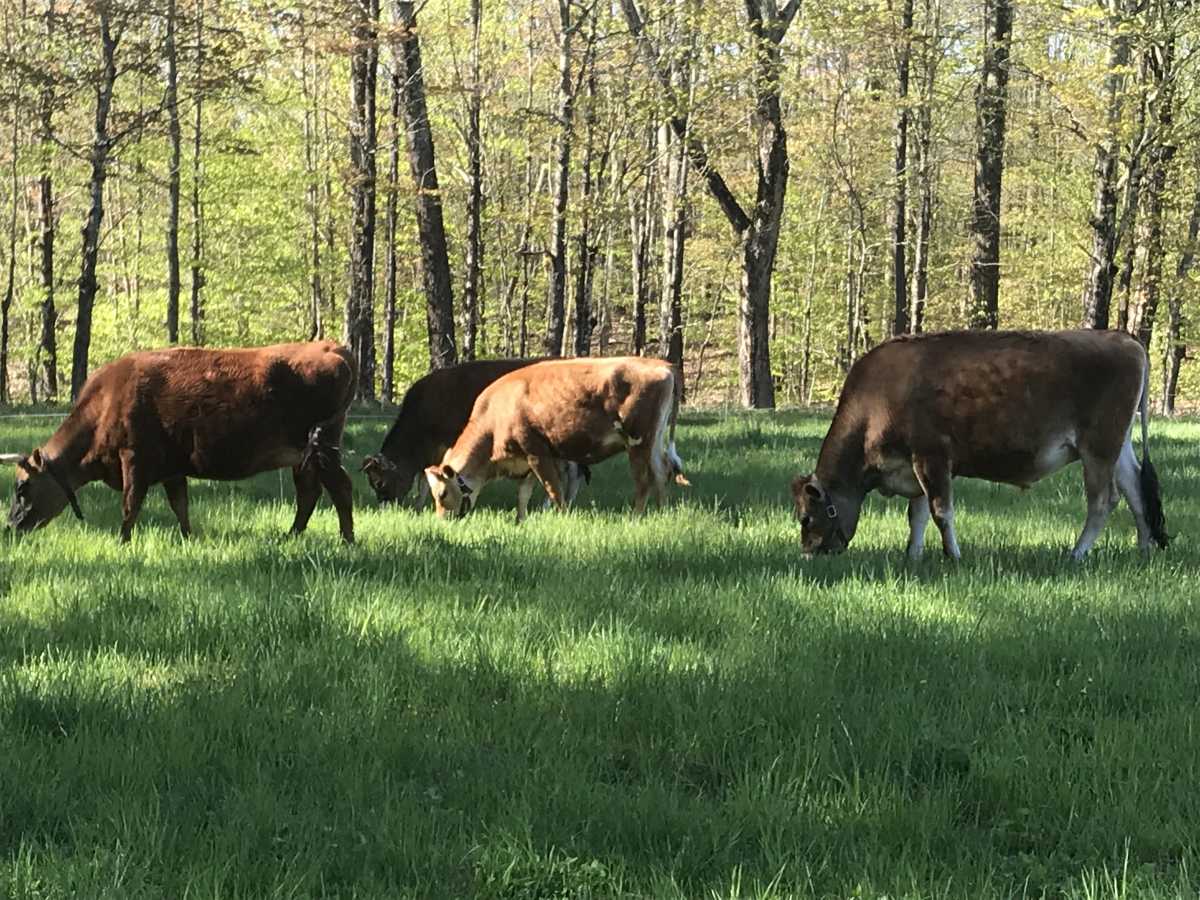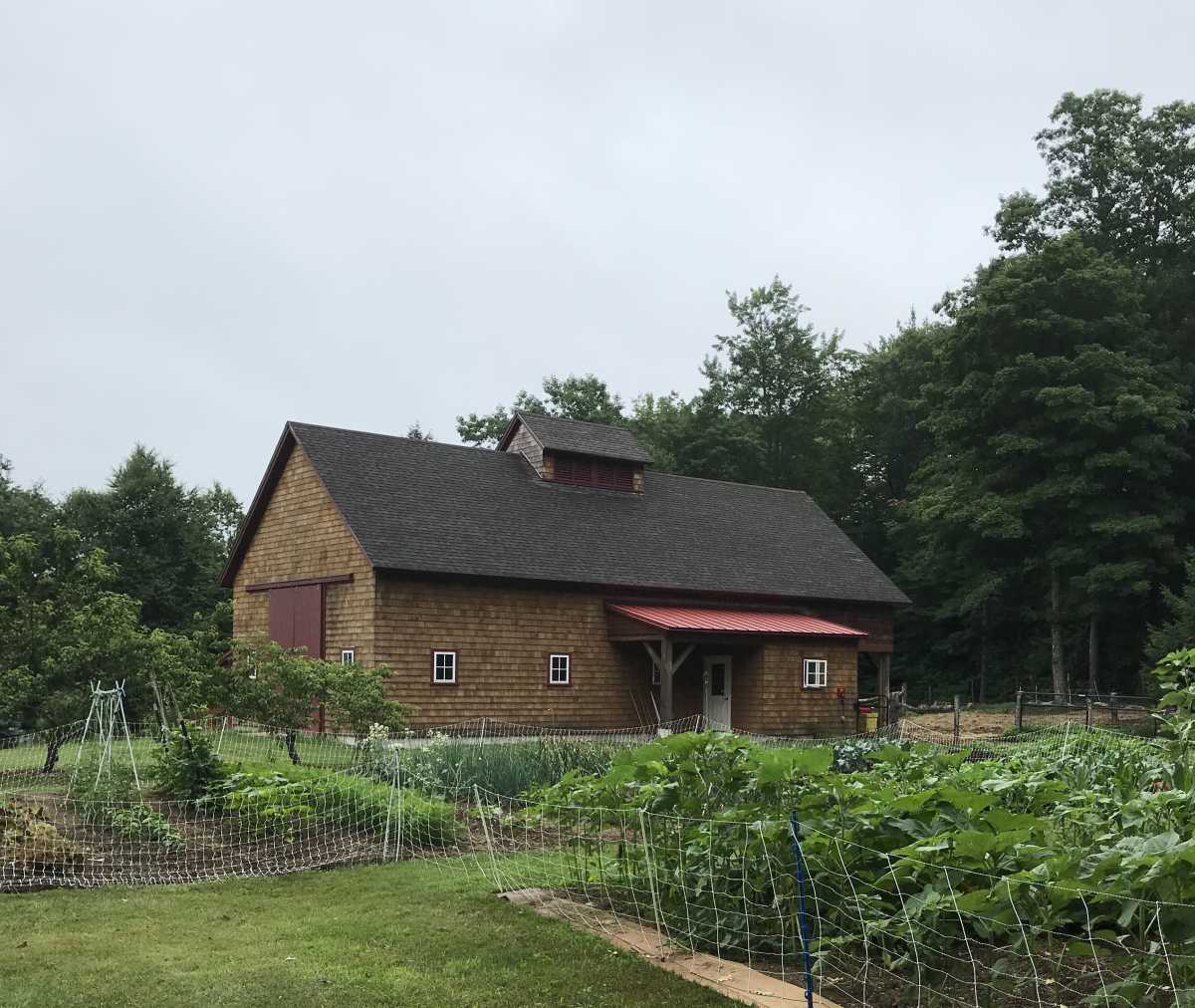
“We have always searched for that place where the seen and the unseen meet.”
In 1992, our family moved from living in-town to our rural farm. Our bee hives came with us and a small seasonal garden began. The next year our third child, Callie, was born and our first born, Ben, entered first grade at Monadnock Waldorf School. We had read a bit about biodynamic agriculture, perused Steiner’s Bee lectures and were members of a nearby biodynamic CSA that included a dairy operation. Little did we know that farming beckoned.
The years that followed were consumed by family, community, and consulting careers. When Callie was five, we decided to add chickens and pigs in an effort to provide wholesome meat for our growing children. But it was my wife, Shelley’s, keen interest in wanting a dairy cow that pushed us into farming in earnest. One cow, soon became more cows, as they are herd creatures, and you must have calves to have milk. If one has cows there is a good pasture imperative. And winters in New Hampshire mean that hay is needed, when pastures are covered in deep snow. And hay grows in hayfields. Thankfully, we had neighbors next door with pasture and hay fields who were open to us leasing them.
Thus, the steep learning curve of farming — animal husbandry, creating healthy pastures and hay fields - began. We were helped along the way by many farmers turned friends, mechanics, and others who aided us as we stumbled through early years of learning to fix broken baling machines, when hay was on the ground, learning how to give a cow with milk fever intravenous fluids when no large animal veterinarians were in our area, and much, much more. Thankfully, jumping into things with limited knowledge has always been a strength of ours. We are curious and insatiable learners.

Biodynamics was still luring us in and we were starting to feel this land that we were stewarding in our bones. In 2001, Shelley decided to take a year-long, once a month, weekend course in biodynamics at The Pfeiffer Center, a 5-hour drive away. My work as a traveling organization development consultant needed to slow down, so that I could milk and be the at-home person. Shelley was a woman on fire, with many thoughts, to put these biodynamic approaches into practice.
That fall, we stirred BD #500 (horn manure), adding barrel compost (Maria Thun’s concoction) in the final twenty minutes. This first time stirring a 30-gallon batch, we wondered how we would keep stirring for a whole hour. The experience was transformative. It seemed that the longer we stirred, the more “cooperative” the preparation infused water became. It was as if we were working together with the Undines (water spirits) to heal the land. Stirring fostered a meditative state. We were finished stirring before we knew it.
Friends came and helped spread preparations in the spring and fall on our hayfields and pastures and we shared a meal afterwards. Some even took extra prep liquid home to their yards and gardens. It was humbling to have friends take time out of their busy schedules to walk every square yard of our fields caring for them in this important way.
We began making the biodynamic preparations, feeling that it would make our farm even more vibrant, and we liked being so hands-on with this craft. We had the cow parts and could grow the herbs. White oak trees were nearby and quartz silica rocks were prolific. Our local hunter friends agreed to save the buck bladders. Slowly, but surely, we saw and felt changes in our land.
Outwardly, others confirmed the vibrancy of the land and our animals. Before we bought haying equipment, a local farmer cut and baled our hay for several years. One day he remarked, “I don’t know what you do to your fields, but you have the best damn hay in the county.” Our raw milk (in our state we can sell 20 gallons per day) customers were so appreciative. Large amounts of time were put into learning about our soils and the grasses that would grow here in our changing climate of New Hampshire. Our 100% grass-fed dairy cows seemed in good shape, but outside perspective was desired to continue to learn. We hired a grazing consultant to give us an opinion on our pasture management. She, Sarah Flack, studied our years of soil tests and closely examined our pasture grasses, noting that our fields were more vibrant than the tests suggested they should be. Sarah praised our animals’ condition, and said that our pastures are among the best that she had seen in New Hampshire. Yes, we were diligent about our cow management grazing practices, but the biodynamic preparations were the added magic for our fields.
Eventually we replaced our cow shed and vinyl hay storage tents with a barn that included animal housing, hay and equipment storage, a milk processing room for yogurt making and a root cellar. Along the way, I retired first, and began making some of our milk into yogurt that is now sold here on the farm and in local health food stores. Callie’s Creamery was created and named for our daughter who loved working with our cows. Sadly, Callie died at age twelve, after a brave battle with cancer. At first it was hard being on the farm without Callie, but the special memories of her, sustain us. Now she is our dairy angel and a daily inspiration.
We are now both retired from work outside of our farm and we have decided to focus on making our biodynamic preparations (Bio-Dynamic Solutions, biodynamicsolutions.org) available for purchase beyond just our local biodynamic community. We believe that preparations that come from a working farm, made with love and intention, have a special vitality that we want to share with others.
Biodynamics is an approach that requires practice, observation and commitment. For us, there is not a one-way church of biodynamics but rather as experimentation that is constant. 
Yes, we use a planting calendar and apply the biodynamic preparations as indicated on our fields and compost piles and at other times when they are needed for a specific purpose (e.g., Equisetum for funguses or Valerian BD #508 for frost protection in our orchard). We incorporate other approaches also. We use hardwood chips around our fruit trees to help create micro-fungal duff zones and amazing vibrancy. Our honey bees are treatment-free, and we raise our own queens, not sticking strictly to all biodynamic approaches. We are very pleased with our results. We strive to grow and preserve most of the food that we eat; each year we get a bit closer to achieving this goal.
Our local biodynamic group is a source of inspiration, encouragement, and fun. The sharing of approaches and perspectives inspires us to keep experimenting and learning. We strive to be in that place where the seemingly miraculous becomes an everyday occurrence; where the seen and the unseen meet.
Robin and his wife Shelley, own Callie's Creamery and sell biodynamic preparations online at https://www.biodynamicsolutions.org. On their site, you'll find other great resources, blog posts, and biodynamic calendars for sale. Be sure to also visit our Regional Groups page, to contact regional biodynamic groups in your area, to connect with others, receive local advisory referrals, and find out about apprenticeship, training, and meeting/workshop opportunities!
P.S. Are you a BDA member with a story to tell? Please reach out, because we'd like to hear it! With the craziness of this past year and the recent passing of many of our beloved elders, we're making it a priority this year, to seek out the stories and journeys of our community members. Email Kaitlin at kaitlin@ biodynamics.com to connect!

Add new comment